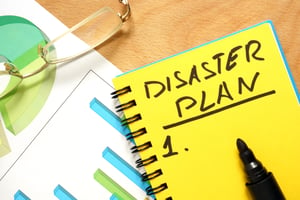
As you cross off important items on your family’s back-to-school checklist, don’t forget to be proactive in learning more about the emergency plan at your child’s school or child care program. All schools and before/afterschool child care programs should have an emergency plan in place to prevent, prepare for, respond to, and recover from emergency situations, such as fires, natural disasters (tornadoes, hurricanes, wildfires, etc.), bomb threats, and dangerous intruders. Ask your child’s teacher or school administrator for details about their plan, and seek clarifications if you do not fully understand components of the plan.
Key Components of an Emergency Plan
Some emergencies necessitate a response that would include the evacuation of children away from the school. Most often, children and staff move to a nearby predetermined location and are able to return to the school after the threat has been resolved. In some situations, however, it may be necessary to move children to a location further away, and returning to the school may not be possible. In a 2016 national survey, conducted by the National Center for Disaster Preparedness at Columbia University’s Earth Institute, it was reported that more than one-third of American households with children (35 percent) are not familiar with their child’s school evacuation and emergency plans, and an even higher number (41 percent) do not know where their children would be evacuated to during a disaster.
Critical questions to have answers to before school begins:
- What plan is in place to safely evacuate children, especially if the school is no longer a safe place to be?
- Where can I typically expect to find my child in the event of an emergency (predetermined site nearby and alternate back-up site)?
- How will I be notified that an evacuation has taken place, and how will I learn about next steps for picking up my child from the school or the evacuation site?
The Centers for Disease Control (CDC) suggests three steps in its Easy as ABC resource to protect your child during emergencies in the school day. These steps include understanding reunification plans, planning for extra supplies, and creating a backpack emergency information card.
Additional resources from the American Academy of Pediatrics include School Safety During Emergencies: What Parents Need to Know, and Are You Prepared for Disasters Family Readiness Kit.





